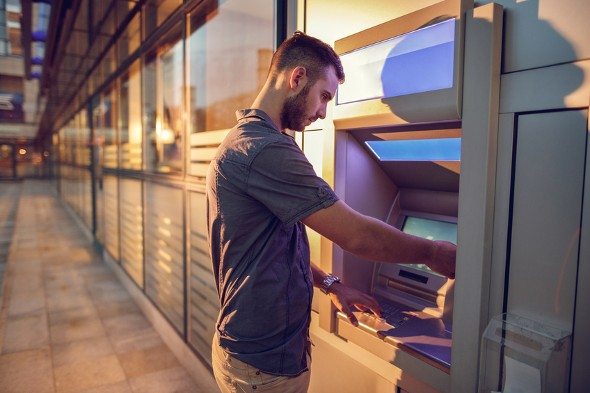Bank-to-bank transfers allow consumers to move money electronically. Specifically, they allow someone to transfer money from an account with one bank to an account with another institution. If you’ve never used this service before, it might seem a little confusing. If you need some help understanding how it works, here’s what you should know about bank-to-bank transfers.
A financial advisor can provide additional insights into how best to use multiple bank accounts.
Bank-to-Bank Transfer Basics
Many of the best banks make it easy for their customers to transfer funds into different savings accounts and checking accounts. In most cases, you can seamlessly transfer money between two financial institutions in the same area or across state lines. While this service is often free, it’s best to confirm that before initiating a transfer.
Rules regarding how much money you can transfer at one time may vary depending on your bank. But generally, anyone who wants to transfer funds can do so through their computer or mobile device. Once you initiate a transfer, your other bank account can receive those funds within a few days.
Keep in mind that bank-to-bank transfers only allow people to exchange funds between their personal checking and savings accounts. If you want to send money to another person, you’ll have to find out if your bank offers this service. Or you can use an app or online platforms like PayPal or Venmo.
Automated Clearing House (ACH)

When it comes to bank-to-bank transfers, one of the main systems involved is ACH, which stands for Automated Clearing House. This network allows money to move electronically between banks in the U.S. It’s been in use since the 1970s and is widely relied on for handling routine financial transactions.
You’ve likely used the ACH payment network without realizing it. Direct deposit of paychecks, automatic bill payments, and many online bank transfers all use ACH. It’s responsible for processing a large share of the country’s electronic payments and helps people and businesses move money safely and efficiently.
ACH transfers are processed in groups, not instantly. This means they usually take one to three business days to complete, depending on the banks and the time of day the transfer is made. Some banks offer same-day ACH service, but it might cost more or have early deadlines. Knowing this can help you time your transfers and avoid delays.
Bank-to-Bank Transfers: Security and Fraud Protection
Bank-to-bank transfers are generally safe, as banks use encryption, firewalls, and multi-factor authentication to protect your account information. When you log in to your online or mobile banking platform, these security measures help make sure only you can access and authorize transfers. Many banks also require verification when linking new accounts, such as confirming small test deposits before allowing a transfer to go through.
Even with strong protections in place, fraud can still happen. Scammers may try to trick you into giving up your login details through fake emails, text messages, or phone calls — a tactic known as phishing. If someone gains access to your account, they could move money without your permission. There are ways to protect your bank account. Always verify messages before responding, and never share your login or bank information over unsecured channels. Avoid using public Wi-Fi when making transfers, and log out of your accounts when finished.
If you notice a suspicious transfer or realize you’ve made a mistake, contact your bank immediately. Some banks may be able to stop or reverse a transaction if caught quickly. Keep records of all transfers and regularly check your account activity for anything unexpected. Many banks offer fraud alerts you can enable to get notified about unusual activity, which can help you take action sooner if something goes wrong.
Bank-to-Bank Transfers: Other Factors to Consider
In order to transfer money from one bank account to another, you might need to link both of your accounts. Sometimes this can take up to a week. If you need to move money over to your account with another bank, it’s best to avoid waiting until the last minute to get started. If timing is an issue, you might be able to expedite your transfer. But that may cost you.
Some banks allow customers to set up their accounts for recurring transfers. So if you automate your finances and periodically transfer money between accounts at different banks, setting up this feature could save you some time. Just remember to confirm that your transactions take place when they’re supposed to.
You should also be aware of transfer limits and processing times. Many banks set daily or monthly limits on external transfers, which may depend on your account type or how long it has been open. Additionally, transfers using the ACH network are typically processed only on business days, which means weekends and bank holidays can delay when funds become available. Reviewing your bank’s policies can help you avoid unexpected delays or failed transfers.
Bottom Line

Most of the best banks have made it easy to transfer money to other financial institutions by either going into a local branch or completing a transfer online or via their app. While there might be limits on how much you can transfer to another bank, and you should check with your own bank, you can typically send the funds the same day. When the bank receives the funds and posts them to the specific account you’re transferring money to depends on that bank. You can even set up recurring transfers to happen frequently if there is a recurring need.
Banking Tips
- Whenever you have questions about your finances it can be wise to work with a financial advisor. Banking is just one part of a very large financial picture that you should consider and an advisor can help you create a plan that makes banking part of your larger picture. Finding a financial advisor doesn’t have to be hard. SmartAsset’s free tool matches you with up to three financial advisors who serve your area, and you can interview your advisor matches at no cost to decide which one is right for you. If you’re ready to find an advisor who can help you achieve your financial goals, get started now.
- Bank-to-bank transfers are just one thing that you may want to consider before deciding on the right bank for you. Check out our free bank reviews to get a better picture of the bank that might be your fit.
Photo credit: ©iStock.com/anyaberkut, ©iStock.com/Peshkova, ©iStock.com/BraunS
